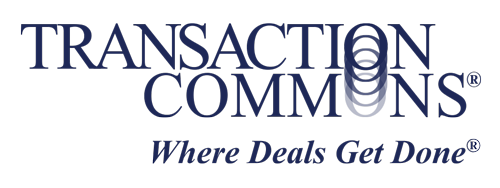Transaction Process Governance – Part 1 (Due Diligence)

As you begin your next deal or other complex business transaction, set aside time to plan how you will govern the transaction process. Document the expected steps in the process and assign roles and responsibilities for members of the project team. The focus should be on the mechanics of investigating, documenting, and completing the transaction – not on longer term (and bigger picture) issues like integration, synergy achievement, etc. For now the focus is on understanding the nature of the opportunity and, if it’s a good opportunity, getting the deal done.
The initial steps in the transaction process are putting in place a confidentiality agreement and often an early letter of intent or term sheet. A small team is involved in these steps and the need for a tight process and controls is limited. That changes as the transaction process moves forward.
There are two key aspects of a transaction that are highly collaborative and document intensive: due diligence and transaction document negotiation. Depending on the transaction, the number of people involved in each aspect could be large, and the people involved will probably change over the course of the transaction. In each aspect it is important to define:
- Who can see the due diligence information and transaction documents? Where and how can they see them?
- Who can add due diligence information and who can add to, or make revisions to, the transaction documents?
- Who monitors and manages 1 and 2?
- When are the target completion dates for due diligence completion and transaction document signing and what are the measurable milestones along the way?
The make-up of the buyer’s project team who will review due diligence information will depend upon the nature of the transaction, the business assets and technology involved, and many other factors. From the seller’s standpoint, the employees responsible for collecting and providing information and responding to questions must be carefully defined. Much of the information will probably be made available via a virtual data room, although an on-site visit to the target’s facilities might be required.
When using a virtual data room, process governance is particularly critical. Rules should be established regarding who may post information and when it may be posted, and then who is responsible for reviewing that information and communicating with the appropriate team leaders. The potential for large amounts of new information to be added to the virtual data room late in the process (with the click of a mouse button) should be discussed and controlled.
More cumbersome is a situation where due diligence information is shared via email or through a less organized process using DropBox or a similar file sharing platform. In those cases due diligence process management becomes more complex and less efficient. It is often useful to identify a point person on each side of the transaction to be the clearinghouse and administrative manager for the due diligence information.
In the due diligence phase the vast majority of information will be provided by the target. The target should have rigorous expectations regarding confidentiality of its information, while the acquirer should have its own concerns about the confidentiality of the potential transaction and the activity of its due diligence team. Consequently, rules should be established regarding virtual data room access and visibility into details about who on the acquirer’s project team has reviewed which documents, when, and for how long. In many situations giving one party access to this detailed usage information about all of the other users may not be appropriate. Again, rules regarding this kind of usage information monitoring need to be disclosed, discussed, and defined by all parties to the transaction.
Concurrent with the due diligence phase, summaries, projections and other project information may be created by and shared among the acquirer team. Procedures must be in place regarding the creation and sharing of this information, with careful attention to confidentiality and controlled disclosure both within and outside the organization.
Sometimes follow-up questions regarding due diligence information are transmitted via email. Proper security, sharing, and archiving of these questions and the target’s responses is critical. The shortcomings of email for this purpose are widely recognized. Consider having this exchange of information also occur within a secure virtual data room where there is a single point of access to this information available to all team members.
Transaction Process Governance – Part Two will discuss governing the transaction document negotiation process.
